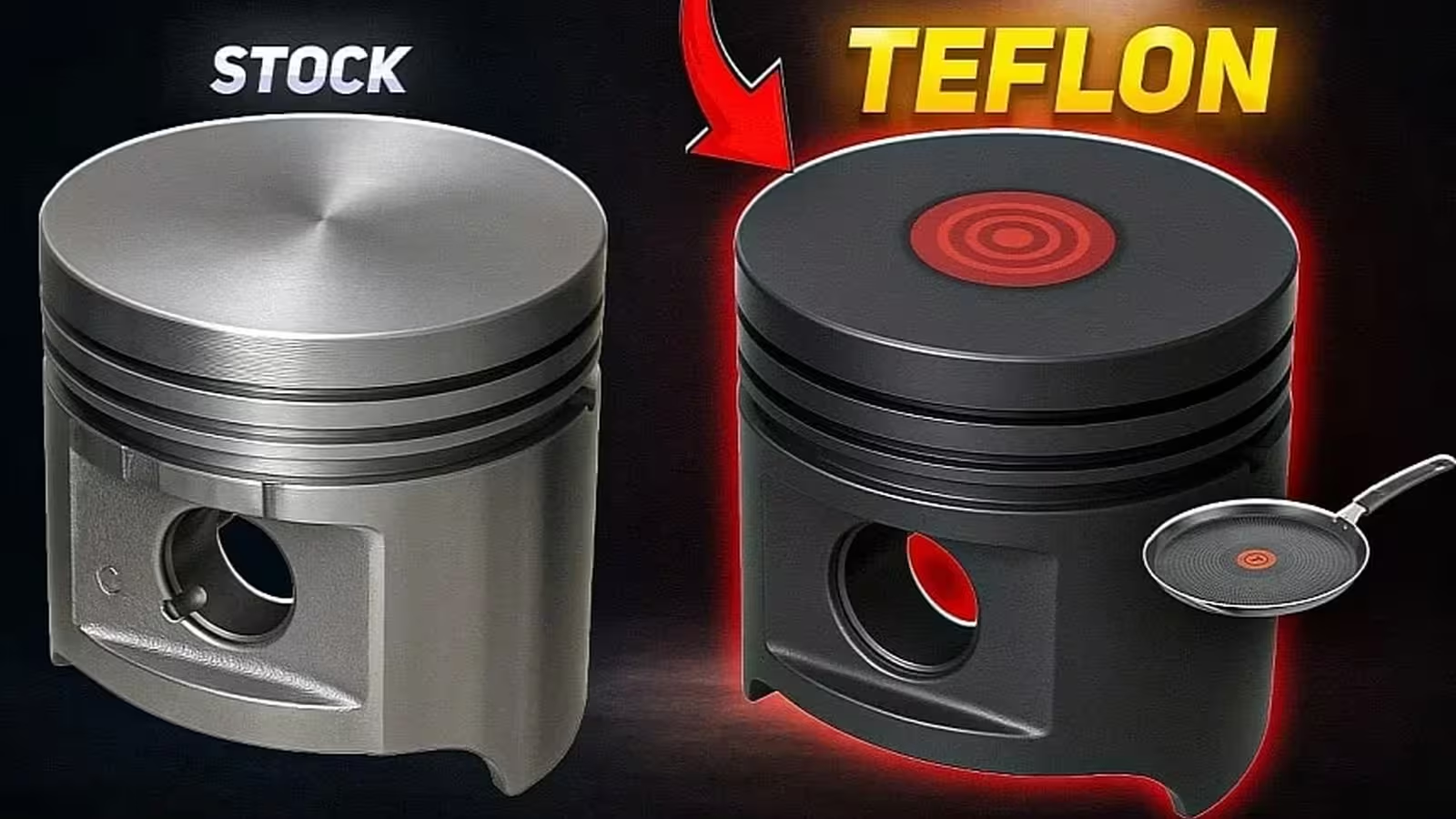6 Minutes
Introduction: Pushing Automotive Boundaries
What happens when automotive engineers decide to swap out high-tech engine lubrication for the same nonstick coating found in your favorite frying pan? Welcome to the mad world of Garage 54—a group of inventive car enthusiasts from Siberia, celebrated for their daring and often outlandish experiments on Soviet-era vehicles. Today, we dive into their bold attempt to coat Lada pistons with PTFE, more widely recognized by the kitchen brand name Teflon, and run an internal combustion engine to near oblivion—all without a radiator.
The Experiment: From Kitchen to Engine Bay
Background: The Role of Lubrication in Car Engines
Every internal combustion engine relies on seamless lubrication. Engine oil forms an ultrathin film between moving metal components, ensuring friction is minimized and heat is kept in check. This principle is as fundamental to your vehicle as butter is to breakfast. Without this essential layer, pistons and cylinders heat up drastically, leading to catastrophic engine damage.
But what if, instead of oil alone, you could reduce friction even further? Enter PTFE, the key ingredient in nonstick cookware. Known for its astonishingly low coefficient of friction and heat resistance, PTFE (polytetrafluoroethylene) seemed like the perfect candidate for an absurdly slippery piston surface—at least, in theory.
The Test Car: Lada Zhiguli
The laboratory for this daring automotive experiment was a classic Soviet-era Lada (Zhiguli), renowned for its robust yet simple design. With a four-cylinder engine at its core, the Lada became the ideal candidate for pushing the limits of piston technology in a controlled, albeit unconventional, environment.

Modifying the Engine: Spraying the Pistons
The Siberian team removed the Lada’s 79 mm pistons and coated them with cookware-grade PTFE—the same Teflon found in high-quality nonstick pans used worldwide. Following the application, the pistons mysteriously shrank to 78.8 mm in diameter—a detail left unexplained by Garage 54 but adding an extra layer of intrigue to this kitchen-meets-garage odyssey.
Performance Under Pressure: Overheating Without a Radiator
Next, Garage 54 assembled the engine and, true to their reputation for boldness, decided to ditch the radiator. The reason? To test how far the Teflon-coated pistons could go without external cooling, subjecting the engine to extreme thermal stress and friction.
As the Lada roared to life, it performed an impressive burnout, sending plumes of smoke from its rear tires and, eventually, a bittersweet cloud of steam from its engine bay. With the radiator out of the picture, coolant rapidly boiled over and was discarded. The engine soldiered on, forced to endure rising temperatures and relentless RPMs.
Sizzling Results: Measuring Temperatures and Damage
After minutes of unrelenting abuse, thermal sensors placed on the engine head and block revealed staggering temperatures—400°F (205°C) at the head and 383°F (195°C) at the block. This was measured on the outside; inside, conditions were undoubtedly much more intense. Under these severe conditions, even the super-slippery PTFE couldn’t prevent thermal expansion and friction-induced wear.
As the pistons expanded, the Teflon coating wore away, ultimately exposing the base metal. Friction between the bare piston and cylinder wall destroyed any remaining hope for a frictionless miracle. At over 2,000 RPM, metal-to-metal contact spelled the end for this ambitious experiment.
Design and Engineering Lessons: Can You Swap Oil for Nonstick Coating?
While PTFE delivers truly remarkable low-friction performance in cookware, its application in automotive environments is a different story. Car engines routinely operate at high temperatures, pressures, and speeds—conditions far more severe than anything even the best frying pan experiences. Industrial PTFE coatings are formulated for specific mechanical and thermal properties, quite distinct from the home kitchen variety used by Garage 54.
Market Positioning and Comparisons
This experiment highlights why traditional engine oil remains irreplaceable in automotive engineering, even as new materials and technologies emerge. Conventional oils and specialized racing lubricants are meticulously engineered to handle the combination of heat, pressure, and movement in internal combustion engines—a challenge that PTFE cookware simply isn’t designed for. In side-by-side comparisons, no modern breakthrough has yet dethroned oil as the king of engine lubrication.
The Verdict: The Limits of Nonstick Technology for Car Engines
Garage 54’s Lada burnout is a spectacular illustration of why creative ideas don’t always translate to practical engineering solutions. While nonstick-coated pistons offered a lower initial friction, they failed to withstand the intense environments inside a running engine—especially with the crucial radiator eliminated. The result? Fast, dramatic overheating and catastrophic engine failure.
Yet, experiments like these are valuable for enthusiasts and engineers alike. They test the boundaries of conventional wisdom and keep the automotive spirit of curiosity alive.
Conclusion: Why Engine Oil Remains Essential for Internal Combustion Engines
Despite the allure of nonstick kitchen technology, nothing currently beats the reliability, adaptability, and effectiveness of high-quality engine oil. Whether cruising the streets or staging an audacious burnout in Siberia, proper lubrication is the unsung hero that keeps engines running strong.
Watch the Madness for Yourself
Check out the embedded video below to witness Garage 54’s epic burnout and the thermal onslaught their Lada endured. For a global community of car lovers, it’s a vivid reminder: the line between genius and madness is sometimes measured in burnt Teflon and boiling coolant.
Source: autoevolution


Leave a Comment